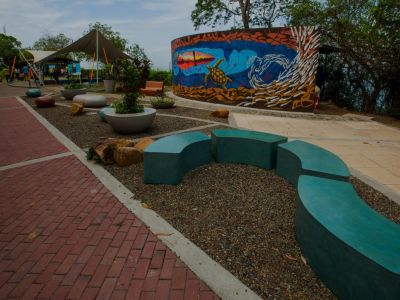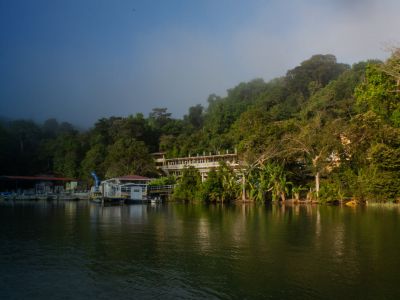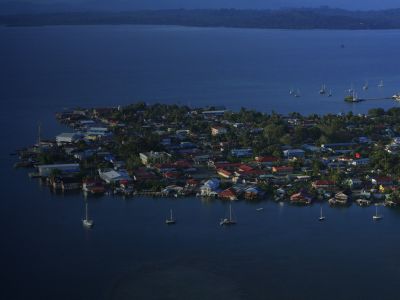The Smithsonian Tropical Research Institute: A Century of Scientific Excellence and Conservation
and where to find them?

In 2023, the Smithsonian Tropical Research Institute (STRI) in Panama celebrates a monumental milestone: its centennial. For a century, this institute has been the epicenter of scientific research in the tropics, unraveling the mysteries of the lush forests, vibrant coral reefs, and varied tropical ecosystems that make up Panama’s tapestry.
The Smithsonian Tropical Research Institute (STRI) in Panama stands as a beacon of knowledge in the heart of Central America. Founded in 1923, this institute is a scientific gem dedicated to understanding the function of lush and complex tropical ecosystems. STRI has become a global authority on biodiversity, ecology and climate change research in the tropics.
Why in Panama?
The idea of establishing the Smithsonian Tropical Research Institute (STRI) in Panama arose from the need to understand and preserve tropical ecosystems, which are some of the most diverse and complex in the world. Several reasons contributed to this decision:

Exceptional Biodiversity
Panama is known for its exceptional biodiversity. Located on the narrow isthmus that connects North and South America, Panama is home to an astonishing variety of flora and fauna. This level of biological diversity in a geographically concentrated area made Panama an ideal place to study tropical life at its finest.
Scientific Interest
Since the early 20th century, scientists and naturalists were fascinated by the tropics and wanted to better understand complex tropical ecosystems. Panama offered a unique natural environment to carry out research in areas such as ecology, botany, zoology and oceanography.
Geographic Position
Panama’s geographic location, with coastlines on two oceans and diverse topography that includes mountains, rainforests and mangroves, provides a variety of habitats that are of scientific interest. The possibility of studying these habitats in a single country made Panama a strategic place to establish a tropical research institute.
International Collaboration
International scientific cooperation was and continues to be a fundamental pillar in scientific research. Establishing an institute in Panama allowed collaboration between scientists from different countries and cultures, fostering an exchange of knowledge and research methods.
Conservation and Environmental Awareness
International scientific cooperation was and continues to be a fundamental pillar in scientific research. Establishing an institute in Panama allowed collaboration between scientists from different countries and cultures, fostering an exchange of knowledge and research methods.
A Heritage of Discoveries
International scientific cooperation was and continues to be a fundamental pillar in scientific research. Establishing an institute in Panama allowed collaboration between scientists from different countries and cultures, fostering an exchange of knowledge and research methods.
The idea of establishing the Smithsonian Tropical Research Institute in Panama arose from the need to understand, preserve and appreciate the richness of tropical ecosystems. Panama offered a perfect setting due to its exceptional biodiversity, its strategic geographical position and the possibility of international scientific collaboration. Over the years, STRI has played a crucial role in scientific research and conservation of the valuable natural resources of the tropics.
Education and Continuing Engagement
STRI has not only been dedicated to research, but has also invested tirelessly in education and awareness of the public and young scientists. Over the years, it has trained generations of scientists and inspired young minds through innovative educational programs and continues to provide opportunities for students and emerging scientists from around the world to participate in cutting-edge projects. Furthermore, its commitment to local communities has strengthened the ties between science and society, promoting the importance of conservation and sustainability.
Conservation and Sustainability
The STRI not only documents the natural wealth of the tropics, but also advocates for their preservation. Through research on the resilience of ecosystems to climate change and deforestation, the institute contributes to the formulation of conservation policies. Additionally, its scientists work hard to promote sustainable practices that protect tropical biodiversity for future generations.
A Promising Future
In its centenary, the Smithsonian Tropical Research Institute in Panama not only celebrates a past rich in scientific achievements, but also looks toward a promising future. With a renewed dedication to innovative research and the preservation of Panama’s natural treasures, STRI continues to be a beacon of hope and discovery in the global scientific community, reminding us of the vital importance of protecting and understanding the treasures of the tropics for generations. future events and the overall health of the planet.
Places of Interest in Panama
These are the STRI places you can visit. All the places are in charge of the institution but we can help you arrange mobilization and visit:

Punta Culebra Natural Center
The Punta Culebra Natural Center, located at the peaceful entrance to the Panama Canal, is focused on the exploration and discovery of the natural world through science. The center, which receives more than 80,000 visits a year, offers a combination of marine and amphibian exhibits, walking trails, hands-on scientific activities and recreational spaces, in a stunning setting just minutes from Panama City.

Barro Colorado Island
Barro Colorado Island was formed after the creation of Gatun Lake in 1913, during the construction of the Panama Canal. The island is home to one of the oldest tropical research stations in the world, where studies have been carried out for more than a century. Every year, around 500 scientists visit this living laboratory to study biology, ecology, evolution and animal behavior.

Bocas del Toro Research Station
Located on Isla Colón, the Bocas del Toro research station offers students and scientists access to an extraordinary diversity of marine and terrestrial life. The station is located among mangroves, near a coastal lagoon.

Punta Galeta Marine Laboratory
The Punta Galeta Marine Laboratory is STRI’s research and outreach center on the Caribbean coast, near the port city of Colón. Located within the Galeta Island Protected Landscape, the laboratory provides access to coral reefs, beaches, mangroves and tropical forests.
Contact Us
If you are interested in visiting these centers, please contact us and let us help you with transportation, lodging and logistics.